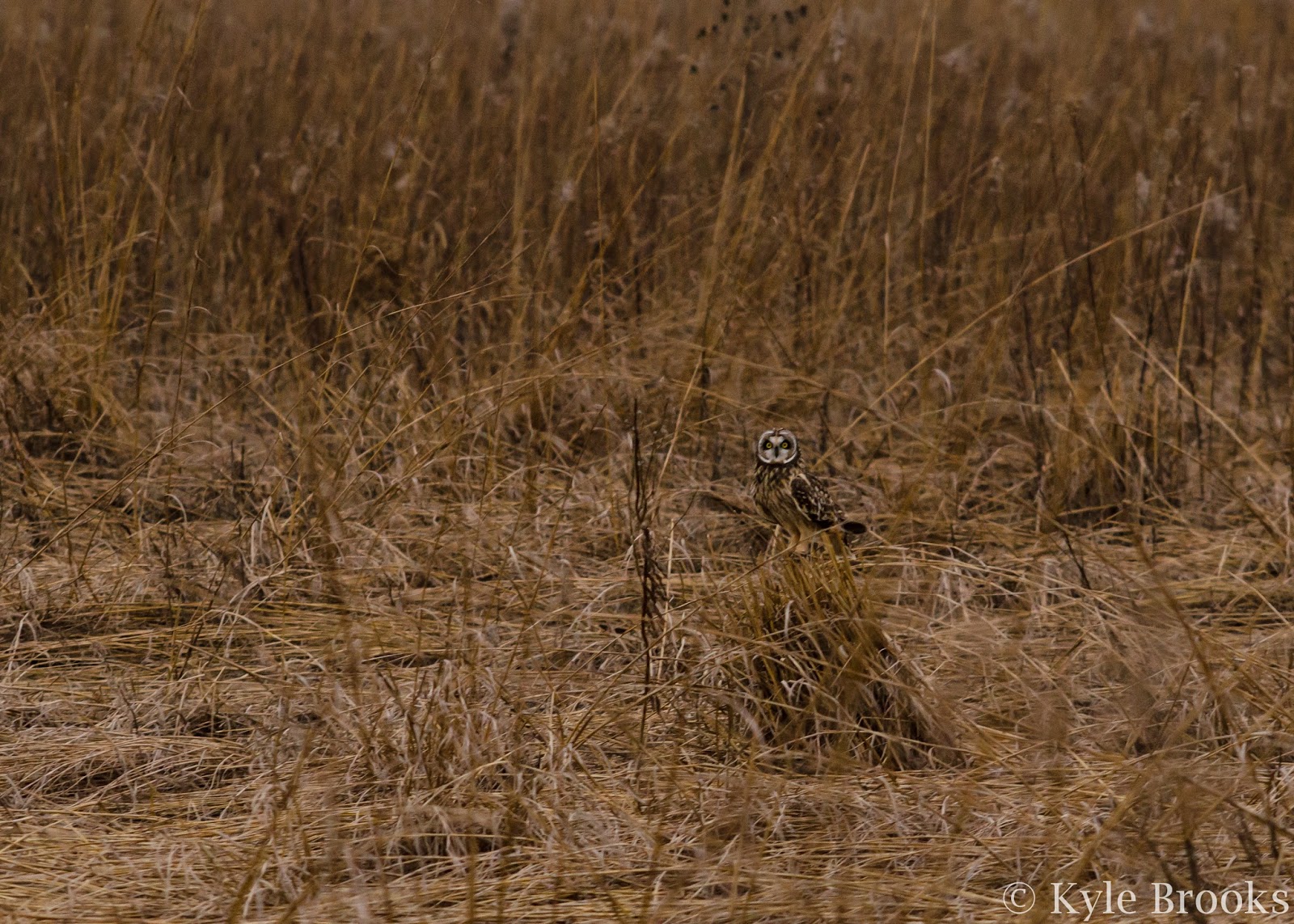The grasslands along Radcliff Road and River Drive have been known to harbor overwintering populations of Short-Eared Owls for several years. Actual numbers of individuals of vary year to year, and I've personally missed out every time I've gone looking for them here. But this night was different. Just a few minutes after turning onto Radcliff Road, I noticed a Short-Eared Owl on the ground looking at me! Finally, my Short-Eared Owl lifer! I was dancing in my car from excitement and shooting photo after photo. Finally, after a few minutes, I decided to continue on down River Road. Then I noticed the others; there were Short-Eared Owls flying everywhere!
This is when I really started freaking out from excitement. At least 7 Short-Eared Owls were flying over the grassland. I wasn't really expecting to see any, let alone have them circling my car! The Short-Eared Owl is a medium-sized owl species that can be found on every continent except Australia and Antarctica. In North America, the Short-Eared Owl breeds in Canada and Alaska as well as the north-western quarter of the lower 48. During the winter months they will migrate farther south to overwinter. Their migration isn't quite like the typical migration of most birds, and instead they exhibit more of an irruptive migration. Basically, they follow vole populations. When vole populations crash in the northern section of North America, large numbers of these owls will irrupt southward to find better food sources. Sometimes this results in these northerly owls being found as far south as Florida or northern Mexico and in great numbers. If the vole populations are high in the north, these owls will not go as far south, and might be completely absent in locations they were abundant at a year ago. These irruptive cycles can make them hard or easy to find in Ohio when it comes to a yearly basis, but they always make an appearance throughout the state each winter. There have even been a few records of them breeding in Ohio, including right here in Pickaway County (probably in this location, but I cannot find exact details), but these records are few and far in between.
 |
| Spot the Short-Eared Owl. |
These owls are strikingly beautiful. You might be wondering about their name though. The Short-Eared Owl is called such as they have small feather tufts (not actual ears) that stick up from the top of their head, much like a Great Horned Owl. However, these owls only raise these tufts when alarmed or excited. Most of the time these tufts are held down, like in the individual above.
If you want to see these owls, check out Radcliff Road and River Drive in southern Pickaway County at dusk. If you aren't near this location, try checking out nearby hay fields or grass fields at dusk. The roads around The Wilds near Zanesville seem to produce a bunch as well! Thanks for reading!




What an interesting post, and very nice photos as well!
ReplyDeleteThank you Lisa!
DeleteHow exciting! Your photos are wonderful. Thank you.
ReplyDeleteThanks!
DeleteHow exciting! Your photos are wonderful. Thank you.
ReplyDelete